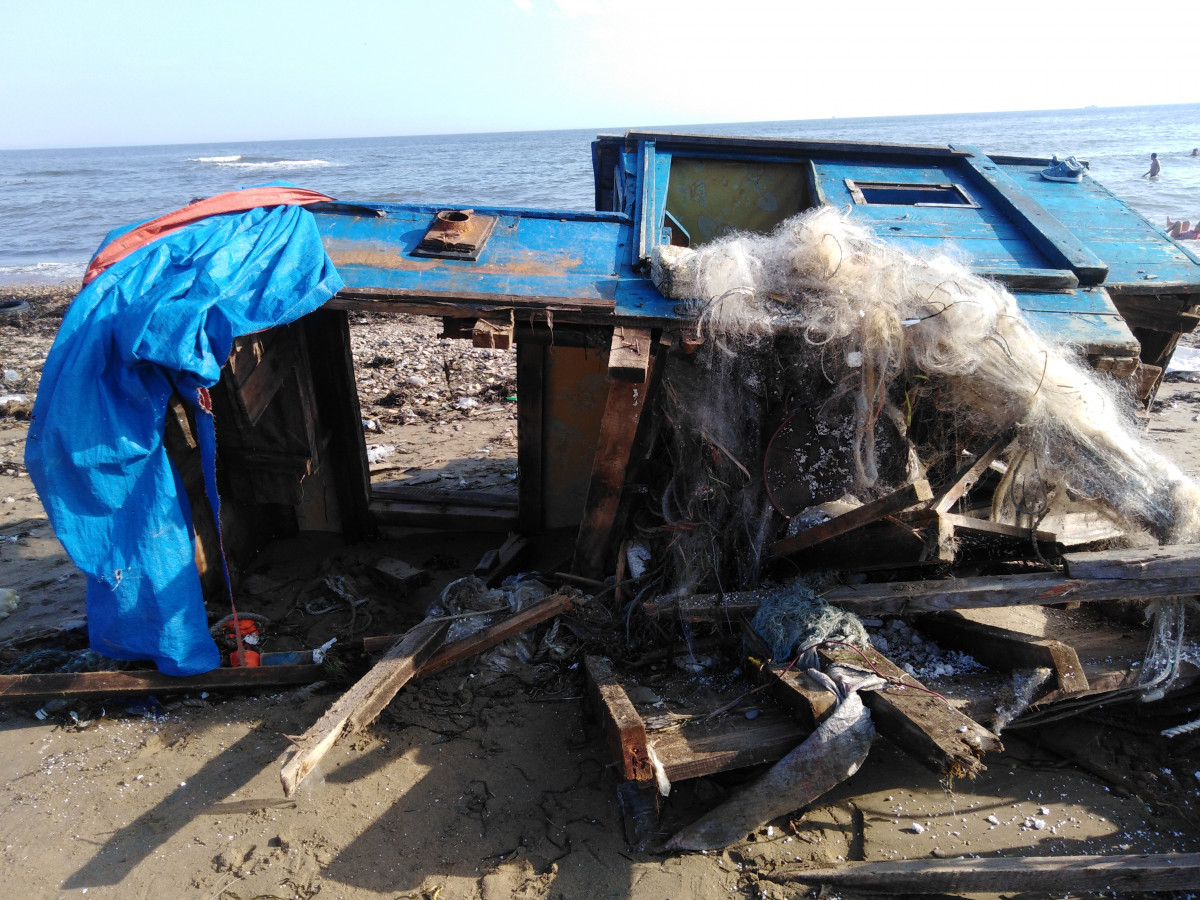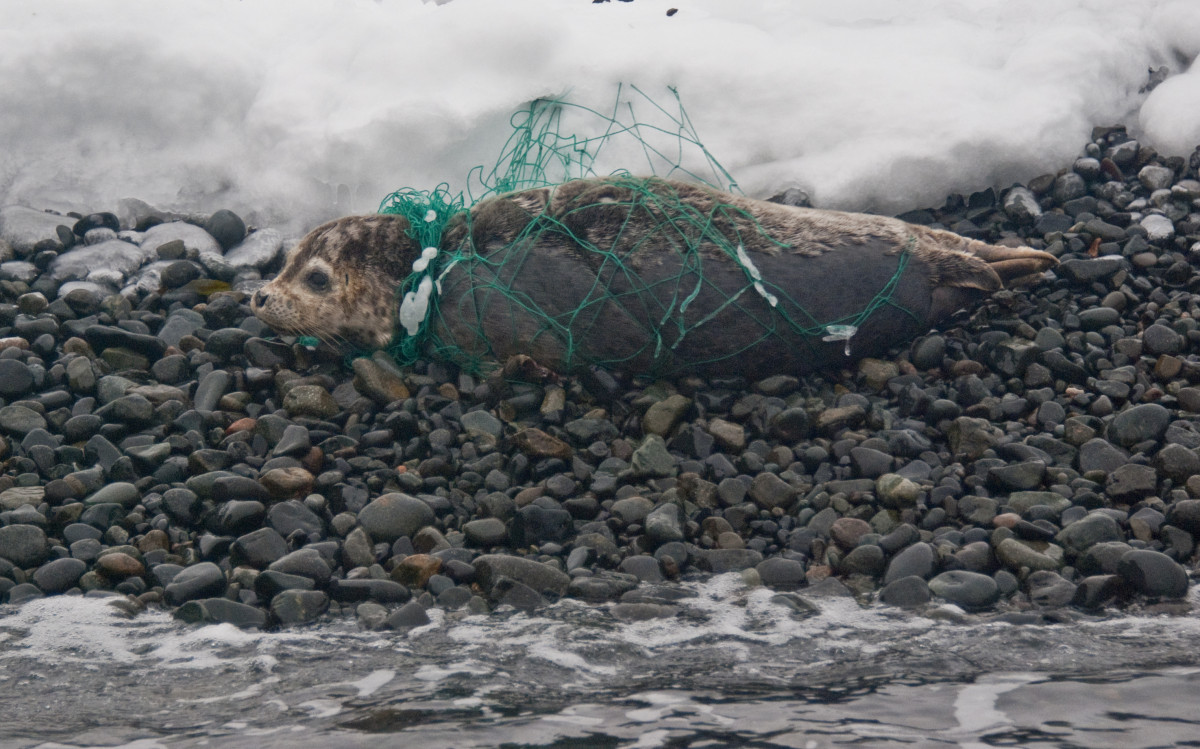In the Far Eastern Marine Biosphere Reserve, the navigation season is over and the risk of poaching increased. According to experts, both the local groups of poachers and the North Korean lawbreakers are netting fish illegally in this area. Those fishing-nets that remain in the Sea of Japan after their illegal fishing pose a deadly threat to all marine wildlife.
The researchers at the Far Eastern Marine Biosphere Reserve call the situation a ‘permanent environmental disaster’.
According to Igor Katin, Ph. D. in Biology, simple calculations can be made to assess the scale of the problem. “On the satellite images, we simultaneously counted over 3,500 vessels fishing in our exclusive economic zone adjacent to the coast of the Primorye Territory,” he said. The scientist added that poachers do harm to the entire marine fauna - from whales, seals, sea lions and walruses, to fish and shellfish. He added that the impact of the North Korean poachers extends not only to the south of the Primorye. This is a big problem for the whole Sea of Japan, it is really an international problem.
According to environmentalists, 20-40 mm mesh gillnets, 8-12 meters high, supported by floats with ropes and used by the North Korean fishermen, are set adrift. Links made from a strong cord are fixed at the bottom and are shorter than the height of the fishnet. In this way, a framework is formed, in which harvesting pockets are formed. More than a kilometer of fishnets, which are essentially disposable, can be installed from each vessel: fish and other objects trapped are usually just snatched from the net, destroying it partially only. These fishnets, preserving their fishing power, drift over long distances, entangling not only the squids for which they are most often intended, but also fish, seabirds and mammals.
Given that a fishnet is used for one or two days only and the fish harvesting period lasts for several months, hundreds of thousands of kilometers of fishnets are discarded. After a single use, spent fishnets are simply sunk. The material from which they are made does not decompose for many years. At the sea bottom, mollusks, sea-urchins, stars, fish, and crabs fall into these fishnets. In the used fishnets that remain on water, seabirds and mammals, including whales and bay seals - the largha seal - die.
When the navigation season is over, the poachers from the local community become active. And the inspectors have had to fight for a long time not with the individuals. Well-organized criminal groups work in the reserve in the Khasansk District. In addition to fishing-nets they throw away, their activities pose another serious danger. The poaching activity intensifies in the fire hazard season, at a time when all the main forces and equipment are used for preventing fires and the fire propagation. To divert services from the place of their illegal fishing, the poachers often set the forest on fire.
At present, scientists have registered 37 rookeries and over 40 coastal grounds used by seals during their migration and trophic movements in the bay. According to various estimates, the largha seal population is from 290 to 450 thousand individuals. At the same time, totally 3,000 individuals live in the waters of the Sea of Japan, which are officially recognized as a unique group. This is a reproductively isolated social form, the distinguishing feature of which is their coastal reproduction. Over the last 20 years, the population has come to equilibrium – their number is from 2.5 to 3 thousand every year.

Six species of pinnipeds inhabit the Sea of Japan, the most numerous of which is a spotted seal, or a largha seal. The territorial group of the largha seals in the Peter the Great Bay is one of the smallest. The unique feature of the group lies in the fact that, unlike other populations of the northern part of the area, the historical pre-requisite for the largha seals living here is their coastal reproduction, which takes place on islands that are suitable for the successful delivery and feeding of the young largha seals.
In the Peter the Great Bay, the largha seals live in one of the most polluted areas. In addition to oil spills, as well as the industrial sewage and communal waste water pollution, in the last decade, the floating debris has become a real disaster for pinnipeds. Mainly, these are plastic items, a significant proportion of which is the waste from the harvest of living marine resources. Every year, 6.4 million tons of fishing gear are lost in the oceans: lost or discarded fishnets make up 46% of the drifting garbage.
In the reproduction and shedding periods, the vast majority of seals concentrate on the Rimsky-Korsakov archipelago, where there is an impending danger of an anthropogenic nature. The largha seals make rookeries in closed bays, but because of this, they are most susceptible to pollution - the garbage gets inside and does not move anywhere. Moreover, it not only injures animals, but also leads to their death. There are no official statistics, therefore the mortality rate of the largha seals was established using surveys of the local population, representatives of the state bodies, environmental movements and members of fishing teams.

Over the last 40 years, the reproductive core of the population on the Rimsky-Korsakov archipelago has been protected by the Far Eastern Marine Reserve, where the activities leading to the environmental transformation are excluded, hunting the animals and intruding into the rookeries are impossible, and a low level of anxiety is ensured. However, the human pressure on the largha seal population in the Peter the Great Bay is increasing. New sources of the environmental pollution appear, including an increase in the amount of floating marine debris. The main content of the floating garbage in the Far Eastern Marine Reserve is fishing litter, mainly floats and parts of gear, including both the fishnets themselves and their synthetic ropes. There are a large number of floats of both industrial and artisanal production. These drift away by surface currents and winds and accumulate on the coasts of bays. In the near-continental part of the Sea of Japan, this type of pollution has become a real disaster in the last 10 to 15 years.
Seals are at risk from their contact with fishing-nets both in the water and on the shore. When a piece of the fishnet is relatively small, the animal can move with it for a long time. If a seal gets entangled in water in a sufficiently large fragment of the fishnet and cannot be quickly released, then it will certainly drown. Moving along the coast, a largha seal can also become entangled in the fishnet fragments, and, as a rule, it cannot free itself.
Up to 7.9 percent of some species of pinnipeds are injured by the marine litter, and one of the negative impacts is the ingestion of plastics by animals. Recently, it has become a global issue. Such a danger also exists in the Peter the Great Bay. A vivid example is the case of a largha seal found with a swallowed fishnet twisted; the total length of the fishnet fragment was 2.5 meters, and the most of it was already in the stomach.
It is known that the mortality of the young largha seals of the current year is 45% to 50%, and for sexually-immature ones over one year old - from 8% to 22%. The share of various type of mortality caused by both natural and anthropogenic causes in the total mortality level is unknown. In order to assess - at least indirectly - the harm to seals from the marine litter, the injured animals are recorded, and the injuries can help determine their origin. The proportion of individuals with such injuries of varying severity can be 2% to 3%. Another harm - not so obvious, but nevertheless quite serious - from the accumulation of garbage that is on the shore lies in the fact that it is deposited in those areas where the largha seals – due to ‘biological reasons’ - prefer to give birth and feed the calves. As a result, female largha seals have to look for another place that could be less comfortable for delivery. The likelihood of successful feeding the young animal and reaching its optimal state before their switching to an independent lifestyle is reduced, which ultimately leads to a lower success in the population reproduction.
The conclusion that scientists make is disappointing: the direct threats of the death of seals from injuries by fishnet remnants and other marine debris can lead to a reduction in the largha seals population to a critical level.




